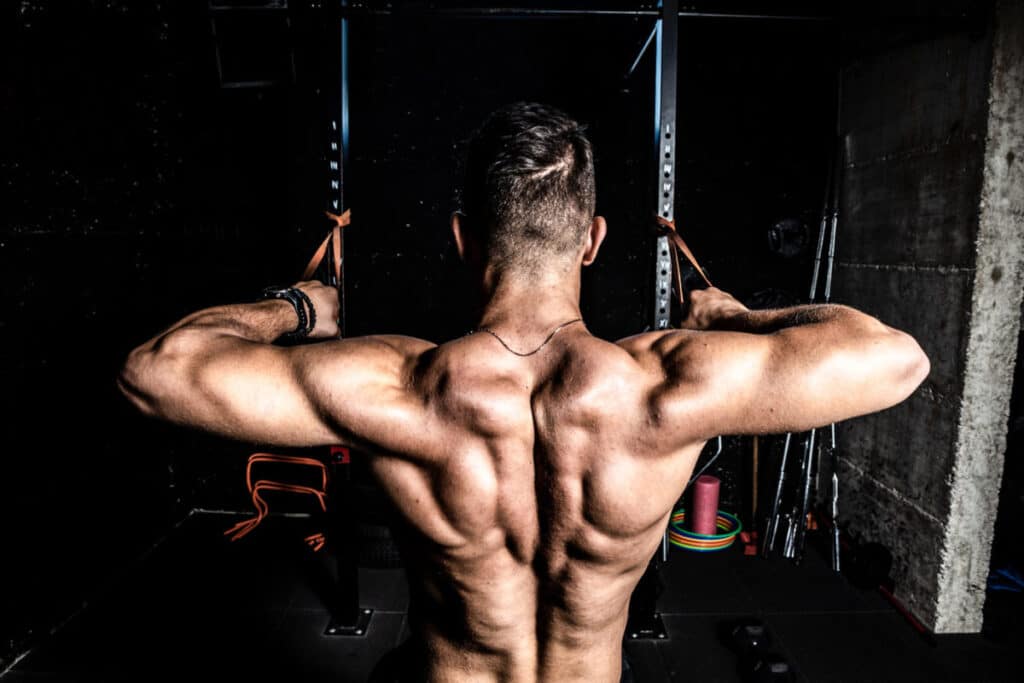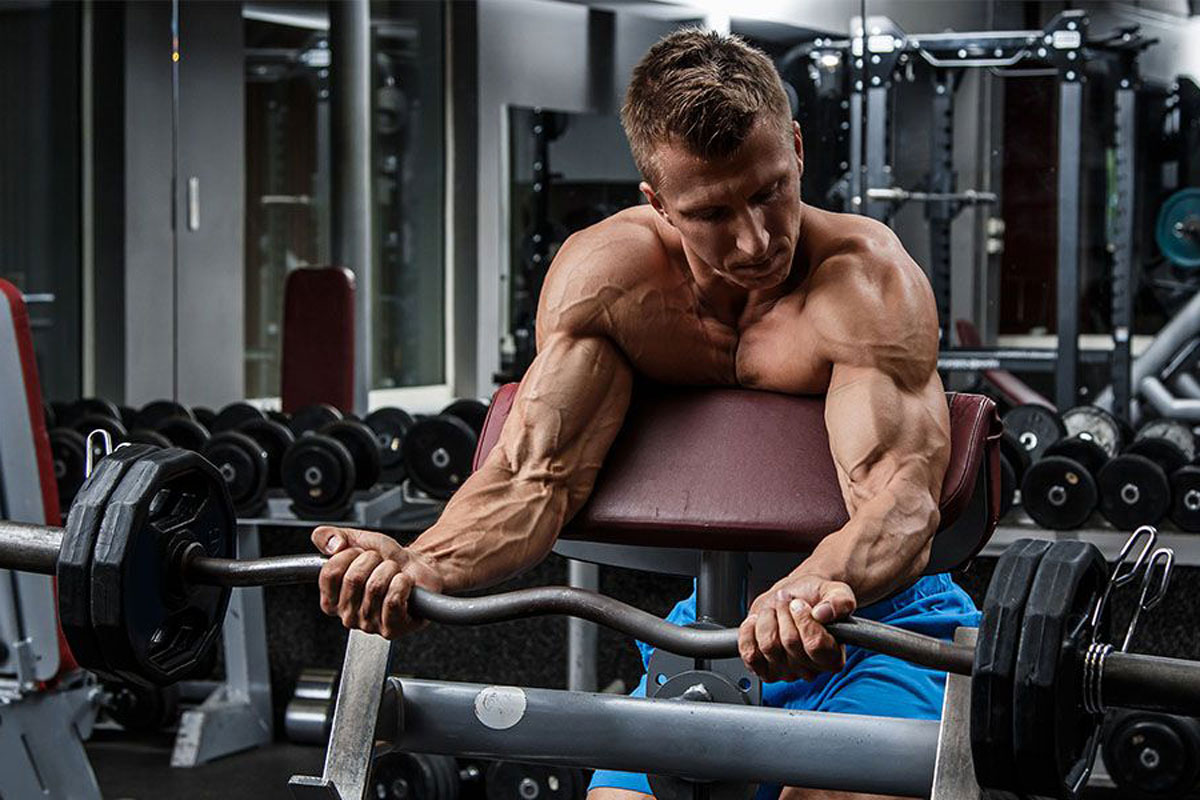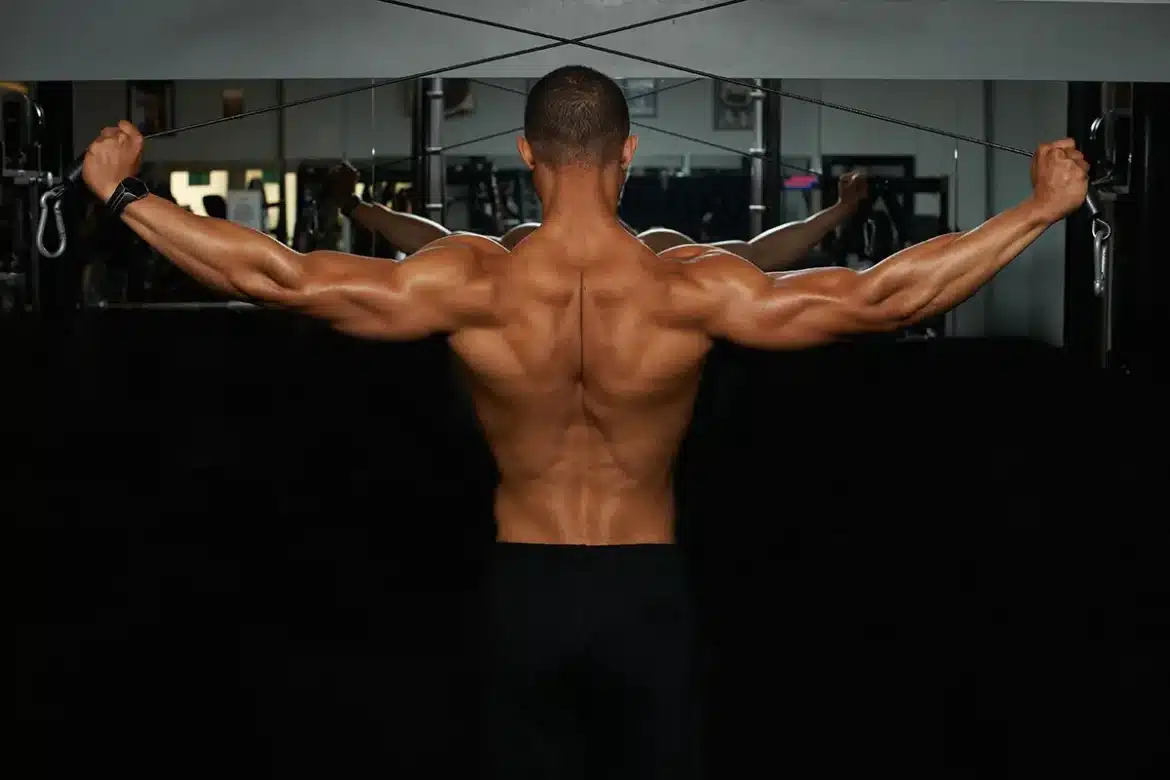Introduction
Does Triceps Stretch Work: Stretching is a cornerstone of physical fitness and overall well-being. It is a practice that transcends age, fitness level, and athletic pursuits, encompassing an array of muscles throughout the body. Among these muscles, the triceps brachii, a group of three muscles that run along the back of the upper arm, represent a critical component of upper body strength and function. Stretching the triceps is a fundamental practice that can significantly impact our physical abilities, comfort, and injury prevention.
The triceps, whose Latin name literally translates to “three-headed muscle of the arm,” is aptly named for its distinct anatomical structure. Comprising the lateral head, medial head, and long head, these muscles are responsible for extending the elbow joint and allowing us to perform a variety of tasks, from pushing open a door to lifting weights in the gym. Their involvement in countless upper body movements underscores their importance, making the need for proper care and maintenance of the triceps undeniably evident.
Triceps stretching, often overlooked amidst the myriad of exercises and fitness fads, offers a host of advantages. It aids in alleviating muscle tightness, reducing the risk of injury, and enhancing the range of motion of the arms. Moreover, it can contribute to better posture, reducing the tension that can accumulate in the neck and shoulders, since the triceps connect to these areas. Whether you’re an athlete seeking to maximize your athletic performance or an individual striving for a pain-free and active lifestyle, the practice of stretching the triceps holds a valuable place in the realm of physical fitness.

Is it good to stretch your triceps?
Stretching is an important part of any fitness routine, and there are many benefits to including it in your workout routine. Triceps stretches help improve flexibility and range of motion in the arms and can also help prevent injuries.
Stretching your triceps is indeed beneficial for your overall flexibility, muscle health, and even posture. The triceps brachii muscle, located at the back of the upper arm, is responsible for extending the elbow joint. It often becomes tight and inflexible due to activities involving repetitive arm movements, such as typing, lifting weights, or even poor posture. Stretching your triceps can help alleviate this tightness and offer several advantages.
Improved Flexibility: Regular triceps stretching can enhance the range of motion in your elbow joint, making daily activities easier and reducing the risk of injury.
Pain Relief: Stretching the triceps can relieve tension and discomfort in the upper arms and shoulders, which is particularly beneficial if you spend long hours at a desk or engage in repetitive arm movements.
Enhanced Athletic Performance: Athletes, especially those involved in sports that require arm and shoulder mobility, can improve their performance by maintaining flexible triceps muscles.
Better Posture: Stretching the triceps can help correct posture issues related to rounded shoulders, a common problem in today’s digital age. Loosening the triceps can contribute to better alignment.
How long is triceps stretch?
Stretch the muscles by pulling your elbow slowly and extending the triceps, hold for 10 to 20 seconds and then change sides. Avoid stretching beyond your arm’s normal range of motion and do the stretches at the end of your workout routine, with your muscles still warm.
The duration of a triceps stretch can vary, but a general guideline is to hold the stretch for about 15-30 seconds. This duration allows your muscles to relax and elongate, which is essential for gaining flexibility. You can perform the stretch once or repeat it a few times, depending on your preference and needs. Here’s a simple triceps stretch to try.
- Stand or sit up straight.
- Raise one arm overhead, bending it at the elbow, and let your hand fall down your upper back.
- Use your other hand to gently push on your bent elbow, encouraging a deeper stretch.
- Hold the stretch for 15-30 seconds, feeling the gentle pull along the back of your upper arm.
- Release the stretch and repeat on the other arm if desired.
- Remember that you should never force a stretch, and it’s essential to maintain slow, controlled breathing throughout to promote relaxation and avoid muscle strain.
How do you stretch your biceps and triceps?
Assume a standing position. Turn your palm facing forward, straighten your elbow, extend your wrist and place your hand flat on a counter or table. Without moving your hand, walk forward forcing your shoulder and elbow into extension until you feel a stretch in your biceps and other forearm flexors.
Stretching your biceps and triceps can be beneficial for maintaining overall arm health and flexibility. Here are simple stretches for both muscle groups.
Biceps Stretch:
- Stand or sit with your back straight.
- Extend your arms straight behind you, palms facing outward.
- Interlace your fingers and gently push your palms away from your body, feeling the stretch along the front of your arms.
- Hold for 15-30 seconds.
- Release and repeat if desired.
Triceps Stretch (a different stretch than mentioned earlier):
- Stand or sit with your back straight.
- Lift one arm overhead and bend your elbow, reaching your hand down your upper back.
- Use your opposite hand to gently push on the bent elbow, feeling the stretch along the back of your upper arm.
- Hold for 15-30 seconds.
- Release and switch to the other arm.
- Both stretches can be done daily to maintain arm flexibility and alleviate tension. Always perform stretches slowly and gently, and if you have any preexisting medical conditions or concerns, consult with a healthcare professional or a physical therapist for guidance on appropriate stretches and techniques.
What is the benefit of triceps?
The triceps are essential for building upper body strength and helping with movement in your shoulders and elbows. Increasing triceps strength brings stability to your shoulders and arms, improves flexibility, and increases range of motion.
The triceps, a group of three muscles located at the back of the upper arm, play a crucial role in various upper body movements and functions. These muscles, collectively known as the triceps brachii, are responsible for extending the elbow joint and contributing to arm stability. Here are some of the key benefits of having strong and well-functioning triceps.
Arm Extension: The primary function of the triceps is to extend the elbow, which allows you to straighten your arm. This action is essential for various daily activities, from reaching overhead to lifting objects.
Pushing Power: The triceps play a significant role in pushing movements, such as pushing a door open, lifting weights, or performing push-ups. Strong triceps are vital for generating force in these activities.
Stability: The triceps provide stability to the elbow joint and contribute to overall arm stability. This stability is crucial for tasks that require control and precision, such as writing, drawing, and using tools.
Athletic Performance: Athletes in sports that involve throwing, swinging, or pushing movements benefit from strong triceps. These muscles enhance performance in sports like baseball, golf, tennis, and weightlifting.
Balanced Arm Development: Strong triceps are essential for balanced arm development. They counteract the action of the biceps, which flex the elbow. Balanced arm muscles contribute to overall upper body strength and symmetry.
What causes tight triceps?
Triceps tendonitis is often caused by activities that require forcefully extending the elbow. Examples include throwing a baseball, hammering, bench presses, and gymnastics. These activities can cause more strain if you quickly increase how hard or how often you do them.
While the triceps are crucial for arm function, they can become tight or tense due to a variety of factors. Some common causes of tight triceps include.
Repetitive Movements: Engaging in repetitive arm movements, such as typing on a keyboard, using a mouse, or performing tasks that require constant arm extension, can lead to triceps tightness. Overuse without adequate rest and stretching can contribute to muscle tension.
Lack of Stretching: Failing to stretch the triceps regularly can result in tightness. Stretching is essential for maintaining muscle flexibility and preventing stiffness.
Poor Posture: Rounded shoulders, a forward head posture, or slouching can contribute to triceps tightness. These posture issues place constant strain on the triceps and the surrounding muscles.
Stress and Tension: Emotional stress and tension can manifest physically in the body, leading to muscle tightness. The triceps may become tight as a response to stress.
Inadequate Warm-Up: Failing to properly warm up before engaging in strenuous activities or exercise can lead to muscle tightness, including the triceps. A thorough warm-up prepares the muscles for work and reduces the risk of tension.
Injury or Overexertion: Trauma, overexertion, or improper form during exercise or physical activities can strain the triceps and cause tightness or discomfort.
Medical Conditions: Certain medical conditions, such as myofascial pain syndrome or muscle imbalances, can lead to persistent triceps tightness.
To alleviate tight triceps, it’s essential to incorporate regular stretching and mobility exercises into your routine. Proper stretching techniques, along with stress management and good posture, can help maintain flexibility and reduce muscle tension in the triceps and throughout the upper body. If tightness persists or is accompanied by pain, it’s advisable to seek guidance from a healthcare professional or physical therapist to address any underlying issues.
How many triceps a day?
“Focus on full-body strength training and adding these triceps moves into your plan three days per week,” she recommends. Aim for three sets of 8 to 15 reps. Use the right weights to optimize your sesh. “You know you’re using the correct resistance when the last two reps seem almost impossible to finish,” says Roser.
The number of triceps exercises you should perform in a day depends on your fitness goals, fitness level, and workout routine. Triceps exercises are essential for building arm strength, improving muscle tone, and enhancing overall upper body performance. However, like any muscle group, they require adequate recovery and shouldn’t be overworked to prevent injury and promote muscle growth.
Frequency: It’s generally recommended to target your triceps 2-3 times a week. You can incorporate triceps exercises into your overall upper body or arm workouts. This frequency allows for muscle recovery between sessions.
Exercise Selection: Choose a variety of triceps exercises to work different parts of the muscle group. Common exercises include triceps dips, push-downs, skull crushers, and close-grip bench presses.
Sets and Reps: The number of sets and repetitions depends on your goals. For strength and muscle growth, you might aim for 3-4 sets of 8-12 repetitions for each triceps exercise. For endurance, you could do more sets with higher repetitions.
Rest Days: Incorporate rest days into your routine to allow your triceps and other muscle groups to recover. Muscles need time to repair and grow, so overtraining can be counterproductive.
Progression: As you get stronger, consider gradually increasing the intensity or resistance of your triceps exercises to continue challenging the muscle.
Remember that a balanced workout routine that targets all major muscle groups is essential for overall fitness. Overemphasis on one muscle group, like the triceps, can lead to muscle imbalances and potential overuse injuries. If you’re new to exercise or have specific fitness goals, consider consulting with a fitness professional or personal trainer to design a personalized workout plan that suits your needs.
Do triceps get bigger?
To build bigger triceps, progressive overload and a calorie surplus will help you add size and strength. Progressive Overload is essentially how hard you’re willing to push yourself each workout. For each session, you should be looking to increase your training volume or weight by a small percentage.
Yes, triceps can get bigger and more defined through consistent strength training and muscle-building exercises. The triceps are composed of three distinct muscle heads (hence the name “tri-ceps”), and they respond well to resistance training and progressive overload. Here are some key points to understand about triceps growth.
Resistance Training: To make your triceps larger, you need to engage in resistance training exercises that target this muscle group. Exercises like triceps dips, push-downs, and close-grip bench presses are effective for this purpose.
Progressive Overload: Muscle growth occurs when you subject your muscles to a level of resistance or load that challenges them. As your triceps adapt to the stress, you need to progressively increase the weight or resistance to continue stimulating growth.
Nutrition: A balanced diet that provides adequate protein and overall caloric intake is essential for muscle growth. Protein is particularly important because it supplies the amino acids necessary for muscle repair and growth.
Rest and Recovery: Muscles grow during periods of rest and recovery, not during the workout itself. Ensure you get enough sleep and allow your triceps to recover between training sessions.
Genetics: Genetics also play a role in the potential size and shape of your triceps. Some individuals may naturally have a greater propensity for larger triceps.
Consistency: Building larger triceps, like any muscle group, requires consistent and dedicated training over an extended period. Results may not be immediate, but with patience and persistence, you can achieve noticeable growth.
It’s important to note that “bigger” can mean different things to different people. Some individuals aim for significant muscle hypertrophy, while others may seek toned and defined triceps. Your specific goals should guide your workout routine and dietary choices. Consulting with a fitness professional or personal trainer can help you design a training plan tailored to your desired triceps size and overall fitness objectives.
What muscles stretch triceps?
Tricep stretches work all three heads of the triceps brachii muscle—the medial, lateral, and long heads, the latter of which attaches to your scapula and extends through your shoulder joint. By stretching your triceps before performing upper-body exercises, you can help prevent a rotator cuff injury.
Stretching the triceps typically involves extending and lengthening the triceps brachii muscle group, which is located on the back of the upper arm. Several stretches can effectively target the triceps, helping to improve flexibility and reduce muscle tightness. The following muscles play a role in triceps stretching.
Triceps Brachii: This is the primary muscle being stretched. It consists of three heads: the long head, lateral head, and medial head, all of which run along the back of the upper arm and are responsible for extending the elbow joint. Stretching these muscles can help alleviate tightness in the triceps.
To effectively stretch the triceps, you can perform various stretches, such as the overhead triceps stretch, behind-the-back triceps stretch, or across-the-chest triceps stretch. These stretches target the triceps brachii by extending the arm and gently pulling on the muscle to promote flexibility and reduce tension. It’s important to hold these stretches for an appropriate duration, usually around 15-30 seconds, and perform them regularly to maintain flexibility in the triceps.
While the triceps themselves are the primary focus of these stretches, other muscles, such as the deltoids (shoulder muscles), may also be involved to some extent, particularly in the overhead triceps stretch. The triceps stretches can also engage other surrounding muscles to a minor degree for stabilizing and supporting the movement.

Conclusion
Stretching the triceps is an integral aspect of maintaining overall flexibility, optimizing muscle function, and preventing injury. This group of muscles, situated on the back of the upper arm, plays a pivotal role in various everyday activities and athletic pursuits. Whether you’re reaching for an object on a high shelf, lifting weights, performing yoga poses, or engaging in sports, the triceps are essential for extending the elbow joint and maintaining proper arm function. Understanding the significance of triceps stretching and incorporating it into your regular fitness routine can lead to numerous benefits, both in terms of physical health and overall well-being.
Triceps stretching offers a range of advantages, and it is important to explore these benefits to appreciate the importance of this practice. One of the primary benefits is enhanced flexibility. Engaging in triceps stretches helps lengthen the muscle fibers, increasing the range of motion in the elbow joint. This improved flexibility can have a profound impact on everyday activities, making it easier to perform actions that require extending the arm, such as reaching overhead, pushing, and pulling. In sports, particularly those that involve throwing, swinging, or any arm-related movements, greater triceps flexibility can lead to improved performance and reduced strain on the muscle.
Triceps stretching is vital for injury prevention. When the triceps are tight and inflexible, it can lead to overcompensation by other muscles, increasing the risk of strain and injury. Over time, this may result in chronic pain or dysfunction in the shoulder, elbow, and wrist. By incorporating regular triceps stretching into your fitness routine, you can help ensure that these muscles remain supple and can handle the stress they encounter during physical activities.

